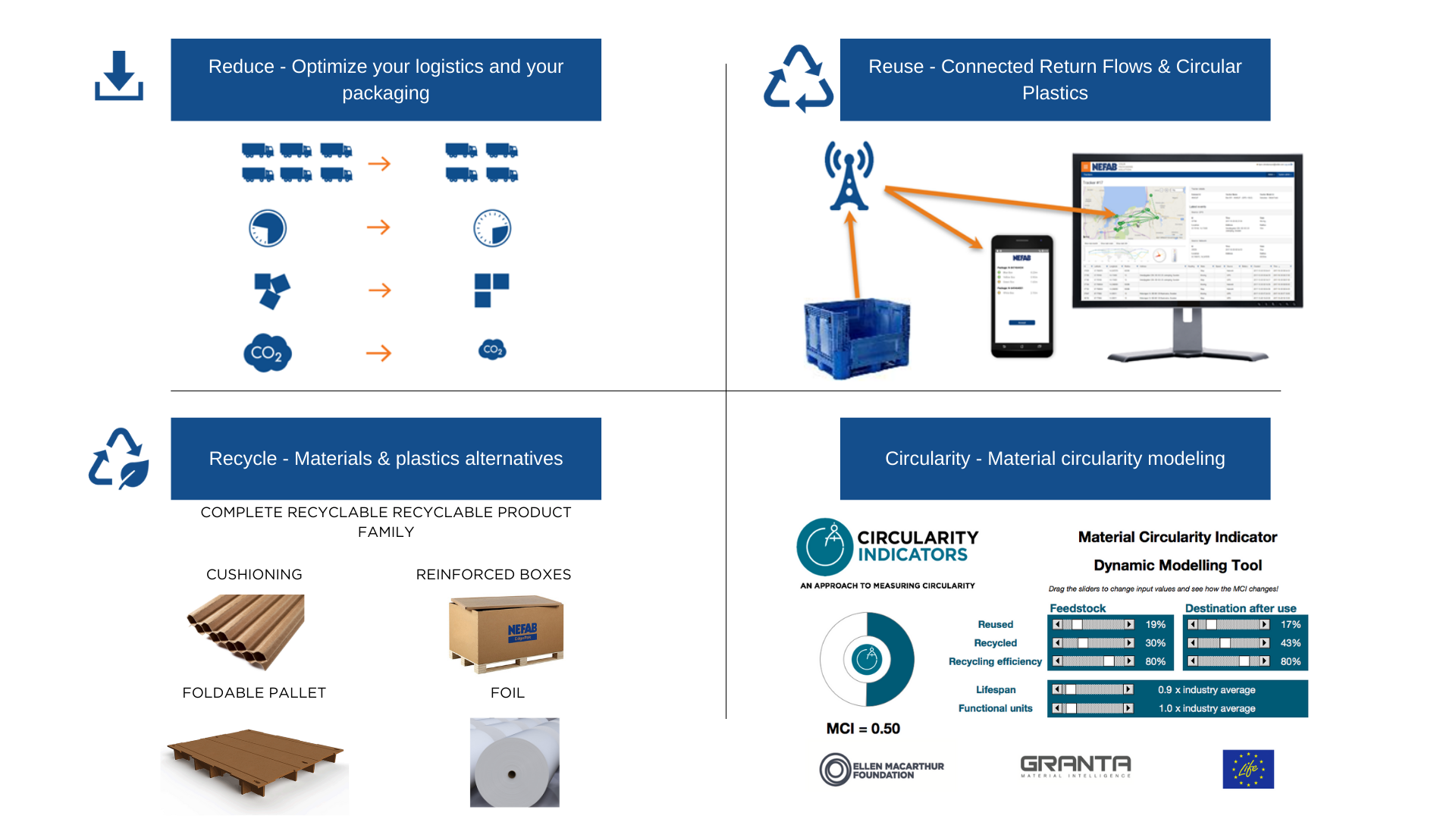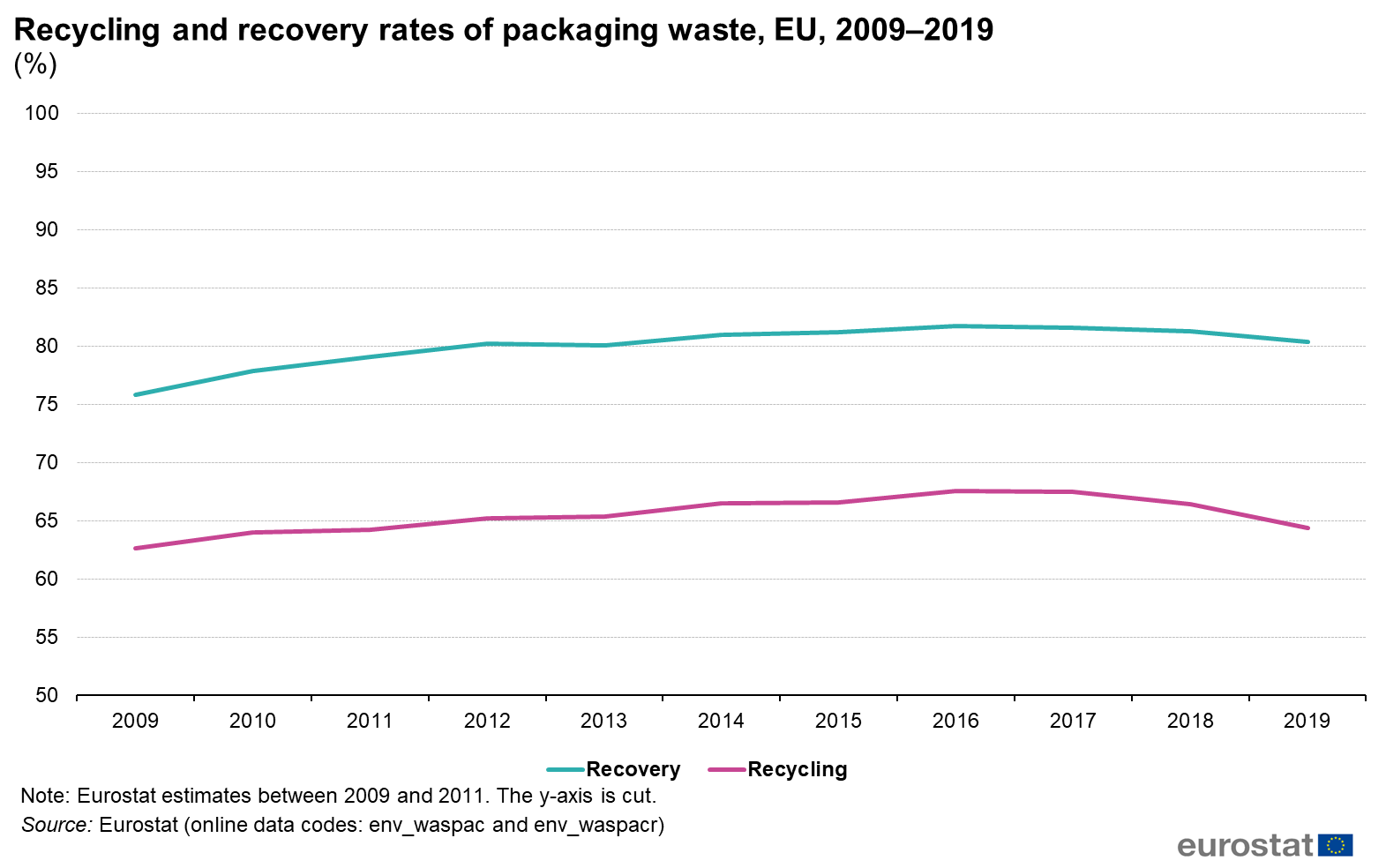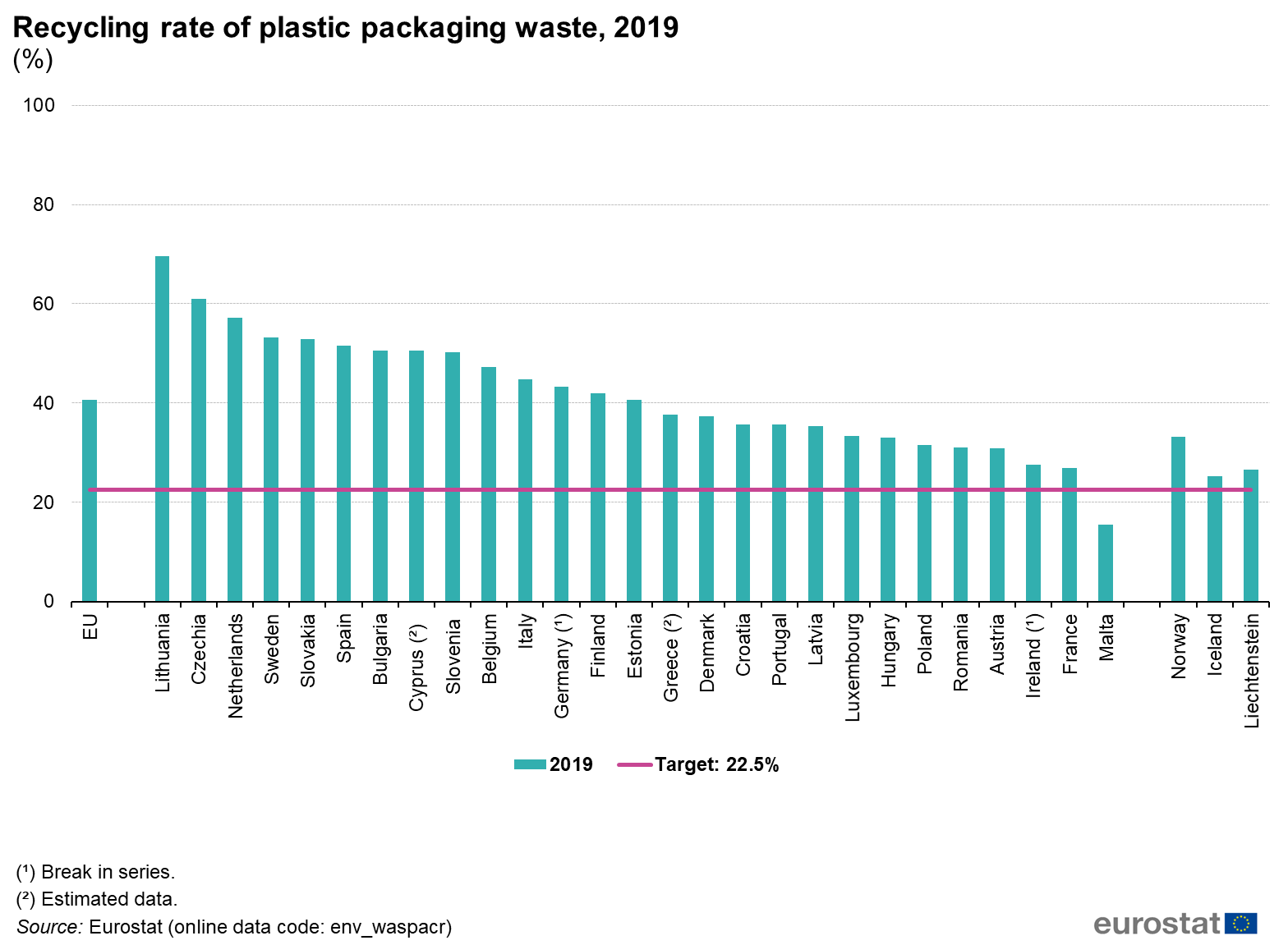- News & Insights
- 2022
- Sustainability in packaging according to our customers
- Sustainability
- Innovation
NEWS & INSIGHTS
Sustainability in packaging
Sustainability in packaging according to our customers
Sustainability affects many different aspects of packaging production and logistics. Nefab conducted a customer survey at the end of 2021 to better understand the key priorities in terms of sustainability. Continue reading to find out the three key takeaways and recommendations.
There is no doubt that the global packaging industry has finally recognized that the time to act on climate change is now. Every day, there is news about new product launches using sustainable materials or companies that are switching from traditional energy to alternative sources to reduce CO2 emissions. Key legislative authorities also contribute by enacting rules and regulations supporting this direction, such as the EU Green Deal or the Paris Agreement.
However, there is still much work to be done. The matter is that sustainability affects many different aspects of packaging production, logistics, and supply chains, and each player has unique requirements and challenges. Nefab conducted a customer survey at the end of 2021 to better understand the key priorities in terms of sustainability. Continue reading to find out the three key takeaways and recommendations.
1. Reduction of CO2 emissions
More than half of all surveyed customers confirmed that reducing CO2 emissions is their most pressing challenge and demand. This is understandable given the huge push to reduce global greenhouse emissions by at least 50% within the next 8 years (United Nations Climate Change). Since transportation is the biggest culprit here, accounting for more than 23% of global CO2 emissions according to the UN, the simplest solution is to optimize the transportation model.
A thorough Life Cycle Analysis (LCA) helps to analyze the potential savings on both packaging costs and load optimization while providing a full picture of the business’s environmental impact. In 2021, Nefab completed over 1,300 LCAs, assisting its customers in reducing CO2 emissions by approximately 30% over the full life cycle of the packaging, including its production, transportation, and end of life. For example, by designing a packaging solution that enables the product to be stacked during transportation, Nefab’s customers were able to increase the load per truck, resulting in approximately $2 million USD in savings per year in addition to CO2 savings.

According to Nefab, packaging companies can meet their sustainability targets by simply implementing the 3R's principle (reduce, reuse, and recycle).
2. Circularity
Over 40% of surveyed customers pointed out circularity as the second most pressing concern among their sustainability targets. Given that the market generates a huge amount of packaging waste, this is an understandable challenge. According to 2019 data, each European Union inhabitant threw away an average of 178.1 kg of packaging waste. The key point here, however, is to change the way packaging is perceived by both consumers and producers - as a waste rather than a resource. Companies can redesign their packaging to reduce waste or implement returnable solutions to extend the life cycle.
Another alternative is to increase the use of recyclable or reusable materials; for example, wooden boxes, after use can be converted/recycled into panel board feedstock, clean wood can be turned into animal beddings, and the remains can serve as biomass fuel. Some applications, however, require materials that are difficult to recycle and will then need to be incinerated or landfilled, like polyurethane foam. In this case, companies can still reduce their carbon footprint by recovering energy for future production. The goal is to avoid sending waste packaging to landfills, which has been the case for nearly 38.5% of packaging waste until now.

According to 2019 data, out of the 178.1 kg of generated packaging waste per capita in the EU, only 64.4% is recycled, on average. Still, 80% of the waste is recovered, mainly through incineration.
3. Reducing the use of plastics
The third most popular response was the plastic reduction, which was mentioned as the key challenge by exactly 40% of respondents. The easiest answer to this issue is to switch to fully recyclable packaging materials such as wood, straw, or fiber. In some cases, in fact, they provide comparable protection during transportation while offering incomparable environmental benefits. That is why instead of fighting with plastics, we need to optimize how we use them and ensure we reuse them as many times as possible.
A good example is reusable pooling solutions, which are made from recycled plastics and last for many cycles, allowing customers to save money while also reducing CO2 emissions. Since every case is different, the recommended approach is to implement tools and systems that allow customers' logistics chains to be tracked and traced in real-time, allowing them to quickly increase the visibility of inefficiencies in their flows and improve product handling. This is exactly how GreenCALC can help, by providing detailed and data-driven recommendations in terms of total cost and environmental impact.

According to 2019 data, out of the 178.1kg of generated packaging waste per capita in the EU, only 40% of plastics are recycled, on average.
Time to act
According to Nefab’s survey, customers are well aware of the sustainability issues, have internal sustainability targets, and measure their success in meeting them using the Carbon Disclosure Project (approximately 52% of respondents) and Greenhouse Gas Protocol (approximately 48%). These trends are also verifiable by important institutions such as the GHPH Protocol and the CDP Report. However, all customers indicated the need for utilizing connected packaging technologies to build truly sustainable supply chains. As presented in the examples above, real-time packaging allows to successfully optimize packaging production, transportation, handling, and recycling.
At Nefab, we are finding new ways to achieve greater sustainability in our solutions and smarter ways to reduce the environmental impact. Together, we can pave the way for a future with less packaging waste for our customers, for society, and the environment. Let’s join forces to save resources in supply chains, for a better tomorrow.
We save resources in supply chains, for a better tomorrow.
Want to learn more?
GET IN TOUCH
Contact us to learn more about our sustainable solutions.
LEARN MORE
GreenCALC
Nefab’s own certified calculator measures and quantifies financial and environmental savings in our solutions
Sustainable Solutions
Engineered packaging for sustainable supply chains


